Natural pools, also known as bio pools or swimming ponds, are a growing trend in the aquatics industry. Unlike conventional pools that rely heavily on chemicals for water treatment, natural pools harness the power of nature to keep the water clean and clear. By incorporating aquatic plants, gravel beds, mechanical filtration and beneficial bacteria, these pools create a self-sustaining ecosystem that closely mimics a natural body of water.
This eco-friendly approach not only reduces water consumption and chemical usage but also provides a unique swimming experience that seamlessly blends with the surrounding landscape. As more hotels, resorts, and wellness centers seek to offer sustainable and immersive experiences, natural pools have become an increasingly attractive option.
Dive deeper with the eBook
What is a natural pool?
A natural pool is a man-made body of water that uses biological and mechanical filtration instead of chemicals to maintain water quality. The key characteristic of a natural pool is the integration of a regeneration zone, which is a shallow area filled with aquatic plants, gravel, and other filtration media. As water circulates through this area, the plants and beneficial bacteria work together to remove nutrients, pathogens, and other contaminants, effectively cleaning the water.
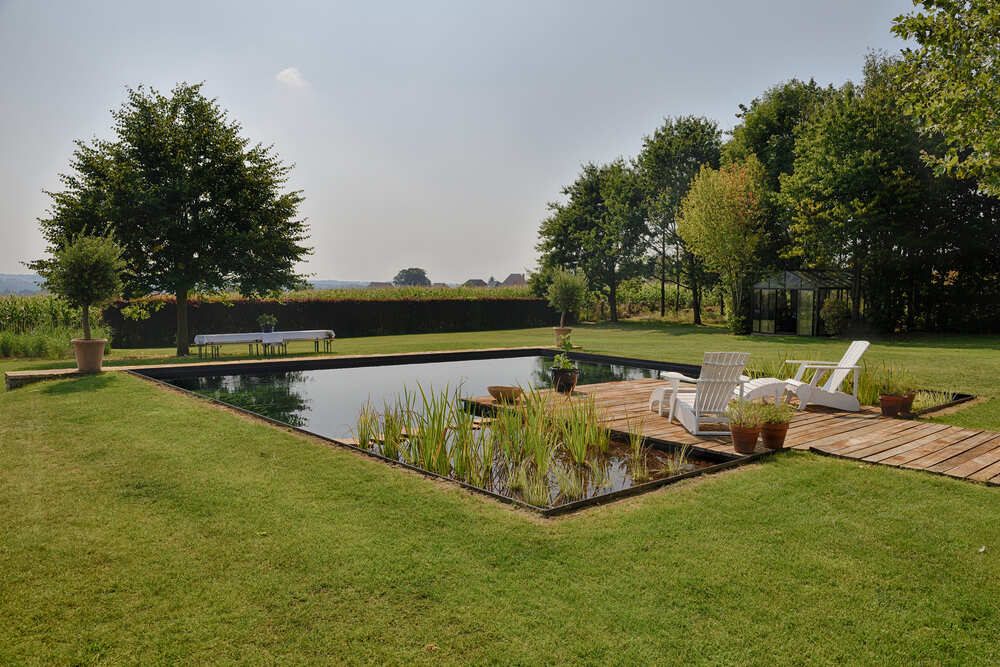
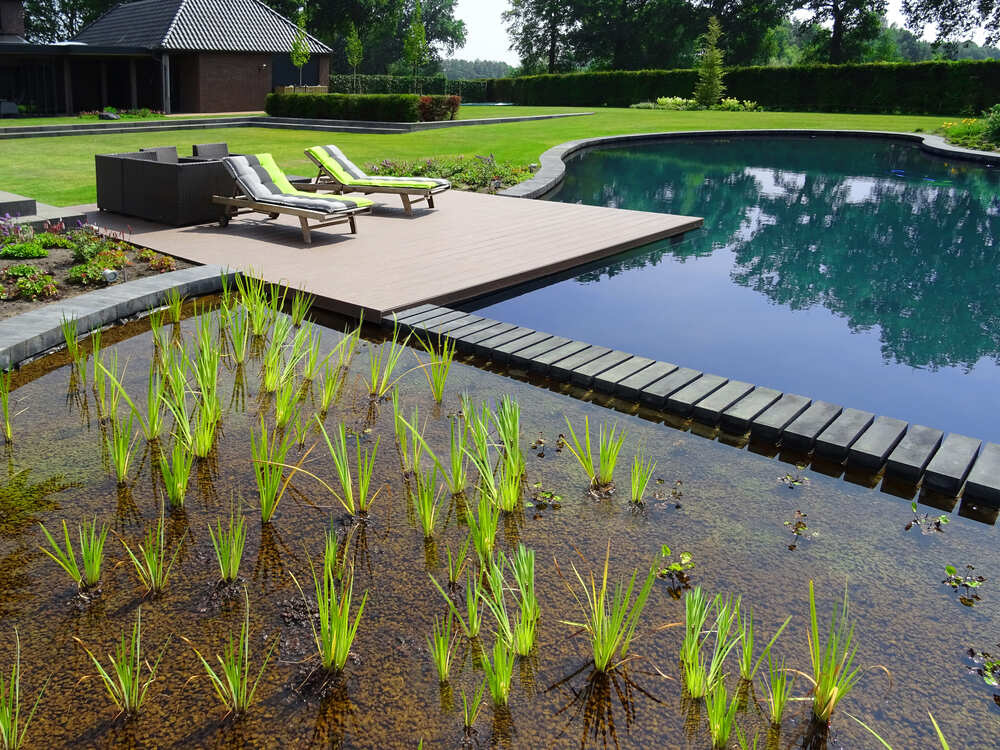
Benefits of natural pools
Natural pools offer a wide range of benefits that make them an attractive choice for both residential and commercial applications.
Environmental benefits
One of the most significant advantages of natural pools is their reduced environmental impact. By minimizing or eliminating the need for chemicals, these pools conserve water and prevent the release of harmful substances into the environment. The aquatic plants in the regeneration zone not only filter the water but also provide habitat for beneficial insects, amphibians, and other wildlife, promoting biodiversity.
Health benefits
Swimming in a natural pool feels different from a conventional pool, as the water is softer and gentler on the skin, eyes, and hair. The absence of harsh chemicals can be particularly beneficial for individuals with sensitive skin or allergies. Some people also report feeling a sense of well-being and relaxation when immersed in the living, oxygenated water of a natural pool.
Aesthetic benefits
Natural pools offer a unique and captivating aesthetic that blends seamlessly with the surrounding landscape. The organic shapes, lush aquatic plants, and crystal-clear water create a serene and inviting atmosphere that is difficult to achieve with a traditional pool. This natural ambiance can be particularly appealing for hotels, resorts, and wellness centers looking to provide an immersive and memorable experience for their guests.
Financial benefits
The long-term financial benefits can be substantial. The reduced reliance on chemicals and the lower energy consumption of the biological filtration system can lead to significant savings in operating and maintenance costs over time. Additionally, the unique and eco-friendly nature of a natural pool can increase property value and attract environmentally conscious customers.
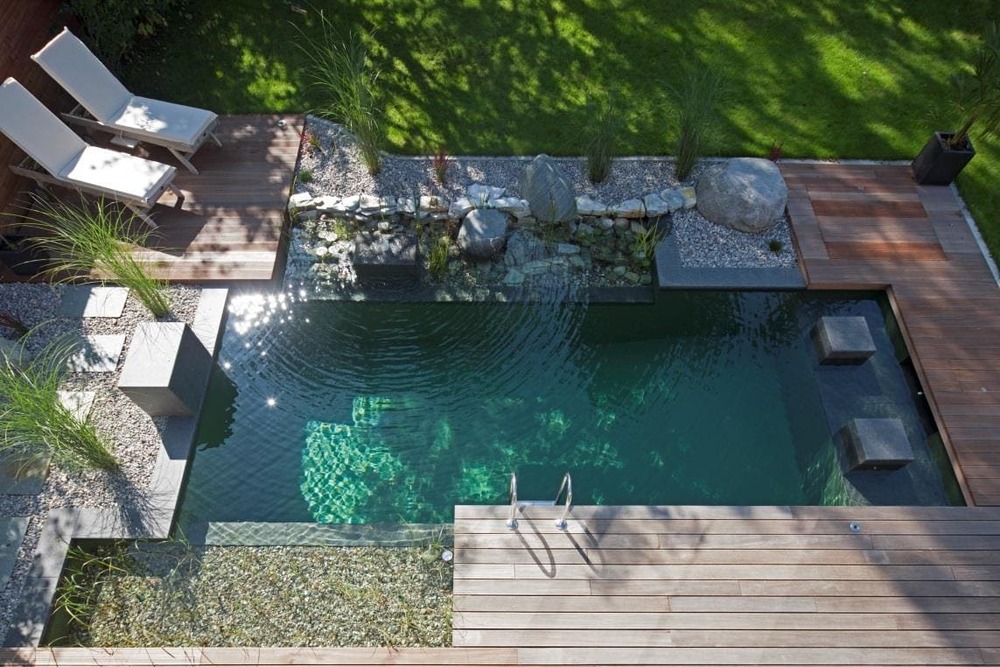
Design considerations for natural pools
Designing a natural pool requires careful consideration of various factors to ensure optimal performance, aesthetics, and user experience.
Location and orientation
Choosing the right location for a natural pool is crucial for its success. The site should receive adequate sunlight exposure to support the growth of aquatic plants, which play a vital role in the biological filtration process. The pool should also be oriented to take advantage of prevailing winds, which can help with water circulation and temperature regulation.
The size of a natural pool and its regeneration zones will depend on factors such as the desired swimming area, bather load, climate, and water source. It is important to work with experienced professionals who can help determine the appropriate sizing based on the project’s unique requirements.
Aquatic plant selection
Selecting the right aquatic plants is essential for the success of a natural pool. The chosen species should be:
- Well-suited to the local climate and water chemistry
- Compatible with the specific design of the pool
- Categorized into functional groups: oxygenators, floating plants, and marginal plants
- Chosen for their aesthetic appeal to create a visually stunning and diverse aquatic landscape
Filtration and water treatment equipment
Now let’s turn to the various configurations, including mechanical and treatment options, vegetation configurations, filter media, and more.
The heart of a natural pool is its circulation and filtration system, which mainly consists of skimmers to remove surface debris, pumps to circulate the water through the filtration system, and biological filtration components, such as gravel beds and plantation zones.
However, depending on the equipment used, we can classify its types from a 100% pure natural pool to other ones with more intervention from the filtration and water treatment systems.
- Pure Nature: This is the option for those who want their natural swimming experience to be fully authentic. The Pure Nature model features a wealth of flora and fauna, which along with a small waterfall or fountain, serve to keep the water clean. Periodic cloudy water is normal, as in nature, but with regular maintenance (pruning the planting zones, vacuuming the bottom, etc.) the water will remain largely clear. Since the walls of this type of pond are not free from algae and/or biofilm, the use of bacterial formulas is strongly recommended to improve water quality.
- Natural: The Natural model is more or less the same as Pure Nature but with the addition of a low-power mechanical filter (sieve filter) and a pump to transport water from the plantation zone to the pool. Maintenance and power consumption are still reasonably light using only skimmers and UVC . The use of these tools makes the water algae-free and relatively clear.
- Clear: This type of natural pool offers a natural experience, good plant growth, and diverse fauna. The filter media and mechanics guarantee clear water all year round, but backwashing filters must be cleaned regularly. The most significant difference in the Clear model is the bead filter. The bead filter acts as a fine-mechanical filter, like a sand/cartridge filter, but with added benefits. After a few months of bacteria growth around the pond filter system, it can filter down to 5-10 microns without affecting backwashing capabilities.
- Crystal Clear: The Crystal Clear model guarantees clear water all year round, with limited flora and fauna. Low-energy pumps run 24/7 during the swimming season while a phosphate filtration system deprives algae of sustenance. Phosfree (lanthanum chloride) is also dosed automatically with a dosing pump, whose built-in timer ensures the same dose is delivered every day.
- BioPool: Visually, the BioPool is a traditional swimming pool without plants, wildlife, or natural sides. The main difference is that the filtration and treatment system is chemical-free; instead, we use low salt hydrolysis systems to produce oxidants and a very, very low amount of chlorine, if necessary.
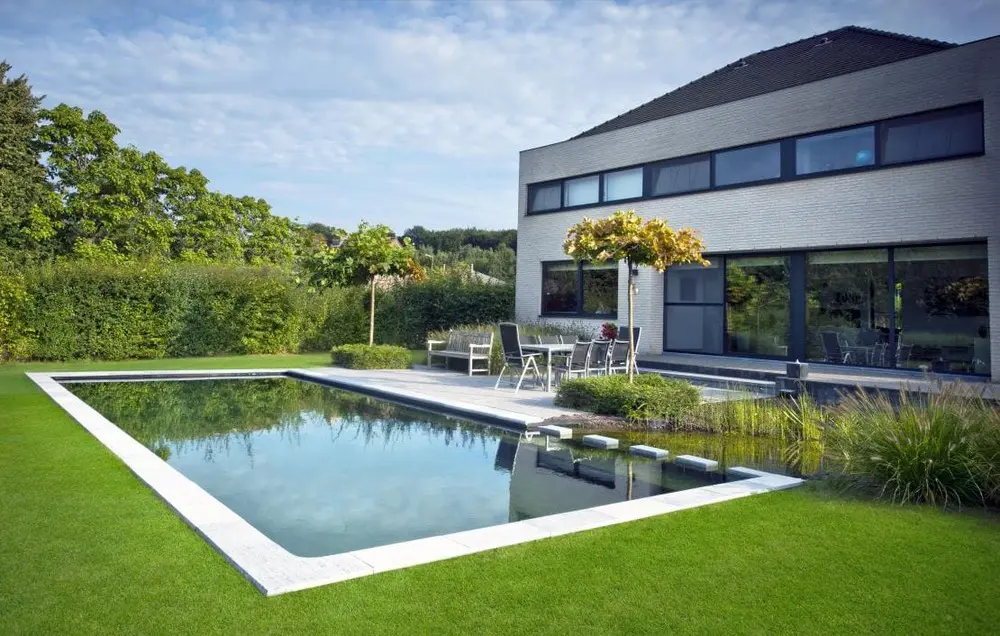
Maintenance and upkeep
While natural pools require less chemical maintenance than traditional pools, they still need regular care and attention to keep them functioning optimally and looking their best.
Some of the regular maintenance tasks for a natural pool include:
- Skimming debris from the surface
- Checking water quality and clarity
- Inspecting the pumps and filtration system
Skimming should be done daily to remove leaves, insects, and other floating debris that can accumulate on the surface. Water quality tests should be performed weekly to monitor pH, alkalinity, and nutrient levels, making adjustments as needed to maintain a balanced ecosystem. The pumps and filtration system should be inspected regularly to ensure they are operating efficiently and to identify any potential issues before they become major problems.
Despite regular maintenance, natural pools may occasionally experience issues that require attendance. One common issue is the growth of algae, which can cause the water to appear green or cloudy. Algae growth can be controlled by ensuring proper water circulation, maintaining balanced nutrient levels, and introducing beneficial bacteria or natural algaecides. Another issue that may arise is reduced water clarity , which can be caused by a variety of factors such as insufficient filtration, excess nutrients, or poor plant health. Addressing the underlying cause and making necessary adjustments to the filtration system or water chemistry can help restore clarity.
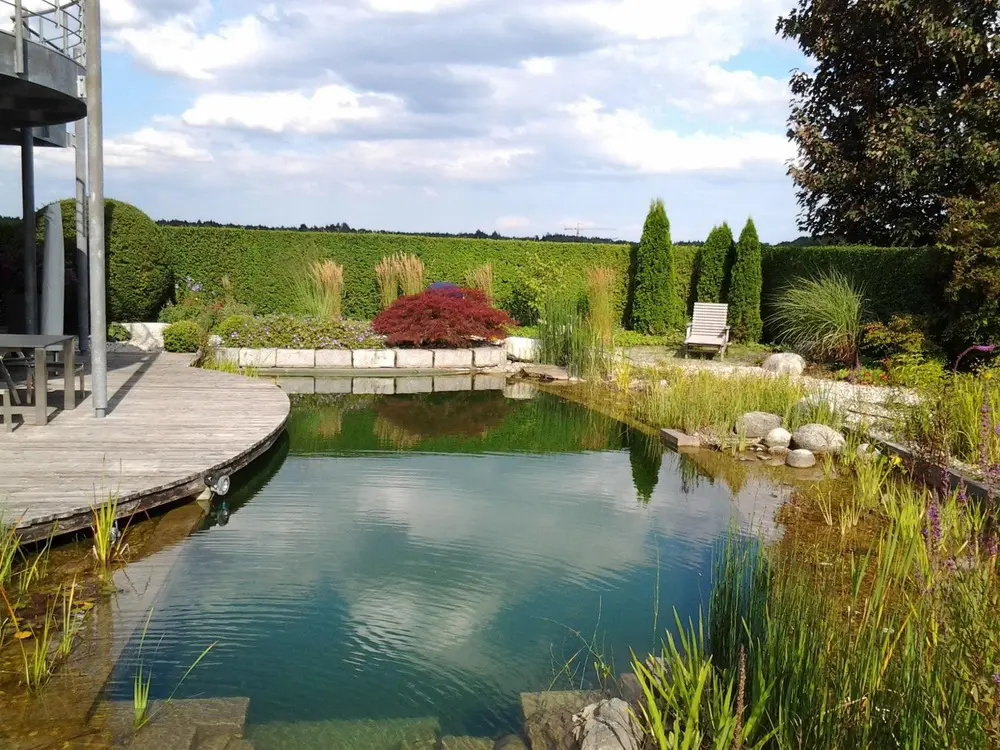
Regulatory and safety considerations
When designing and building a natural pool, it is essential to be aware of and adhere to local regulations and safety standards.
Health regulations
If the natural pool is intended for public or commercial use, such as in a hotel, resort, or wellness center, it must meet the health department regulations for public swimming pools. These regulations may vary by jurisdiction but typically include requirements for water quality, circulation, and safety features. It is important to work closely with local health officials to ensure compliance and obtain the necessary approvals.
Bather load and water quality monitoring
For public and commercial natural pools, it is essential to monitor and control the bather load to maintain water quality and prevent overcrowding. This may involve establishing maximum occupancy limits and implementing a system for tracking the number of swimmers. Regular water quality testing should also be conducted to ensure that the pool meets health department standards and to identify any potential issues that may require attention.
Main applications
The potential and diversity of natural pools allows it to integrate them in different facilities. From private pools in backyards to hotels, resorts and spas seeking for a natural and organic offer.
In all cases, the design and appeal of the pool has to be perfectly blended with the resort style and architectural surroundings to provide an experience that seamlessly integrates with the landscape and the eco-friendly brand identity. Special features can be included such as waterfalls and cascades, natural rocks and an adjacent deck overlooking the pool.
Conclusion
Natural pools offer a compelling alternative to traditional chemically-treated pools, providing a sustainable, healthy, and visually stunning option for both residential and commercial settings. By harnessing the power of nature to clean and purify the water, these pools create self-sustaining ecosystems that require and consume fewer resources, and provide a unique swimming experience that connects users with the natural environment.
As the demand for eco-friendly and wellness-focused amenities continues to grow, natural pools are poised to play an increasingly important role in the aquatics industry. However, the success of a natural pool project relies heavily on proper design, construction, and maintenance practices. It is essential for professionals involved in these projects, including engineers, contractors, architects, and operators, to have a thorough understanding of the principles and best practices associated with natural pool design and management.
